- Passive infrared (PIR) and Ultrasonic (US) together
- Advantage : PIR turns the lights ON & US keeps them ON
- Eliminates the false OFF history of PIR and mitigates the false ON tendencies of US
Looking for a Commercial Occupancy Sensor or Vacancy Sensor? Leviton has an Occupancy Sensor or Vacancy Sensor for every application!
Looking for a Photocell?
Looking for a Residential Occupancy Sensor or Vacancy Sensor?
Frequently Asked Questions
- Senses difference in heat emitted by humans in motion from background
- Detects motion in a field of view that requires line of sight
- Cannot see through obstacles
- “FALSE OFF” is the biggest concern
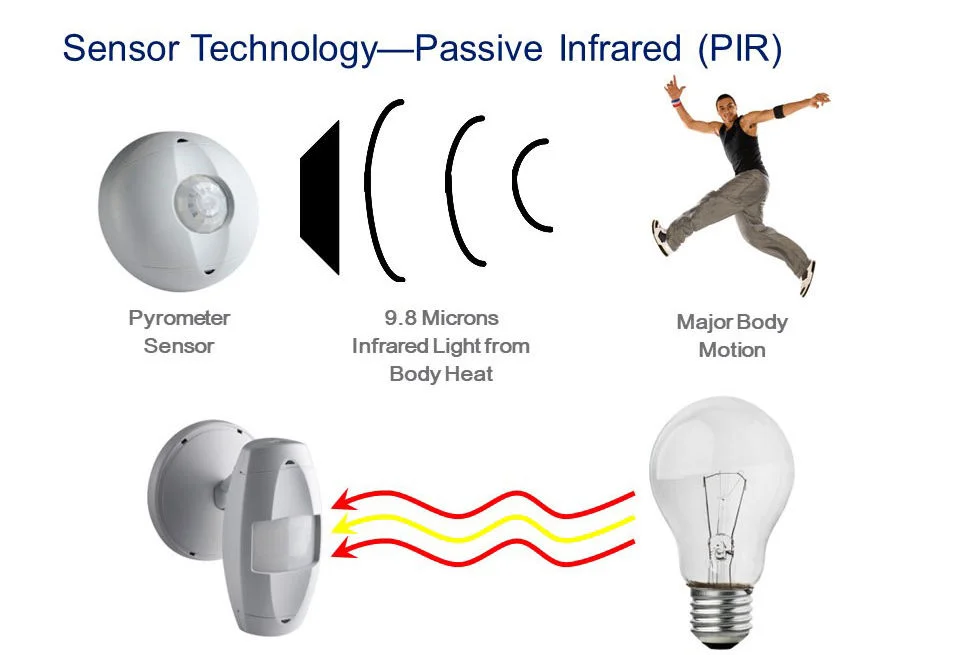
- A sensor’s lens defines its coverage area as a series of fan-shaped zones
- The farther the distance, the wider the gaps, the less sensitivity
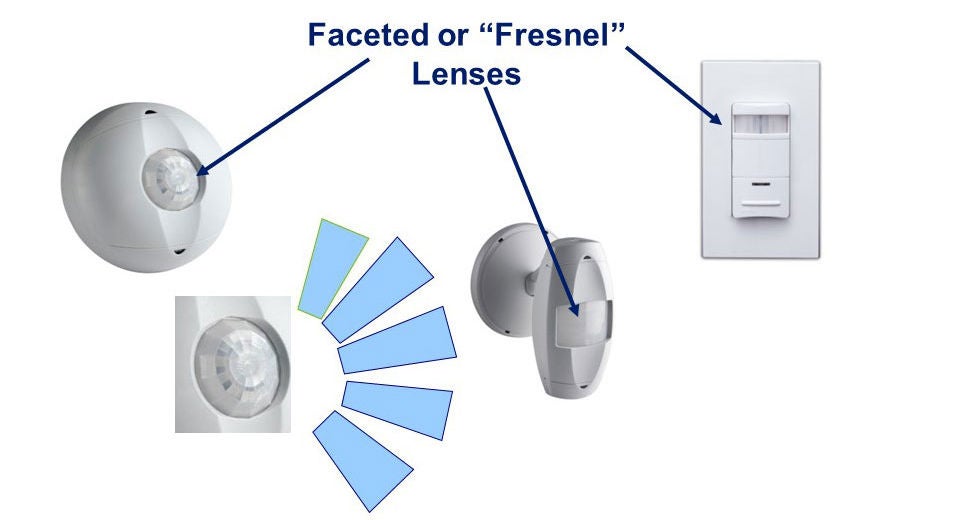
- Uses Doppler – transmits ultrasonic frequencies (32kHz – 40kHz) and monitor changes in the return signal in order to detect occupancy
- Not a “line of sight” device since the transmitted sound signals can bounce or wrap around objects
- No gaps, greater sensitivity, but more vulnerable to nuisance switching
- “FALSE ON” is the biggest concern
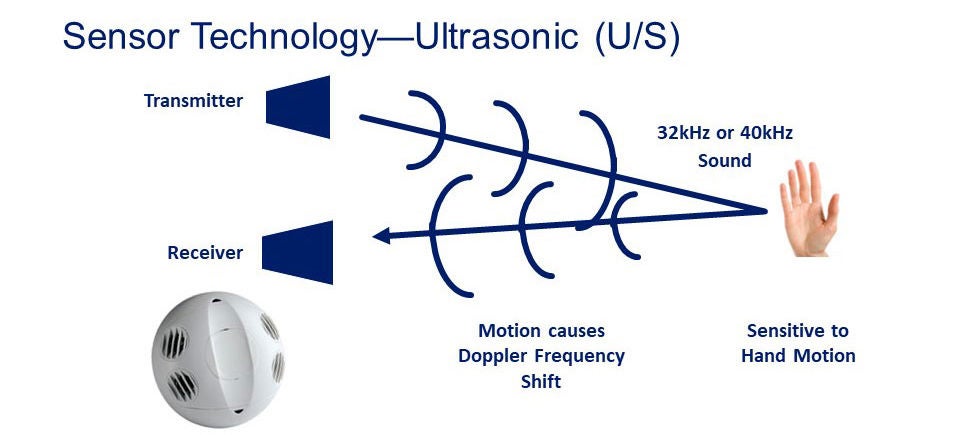
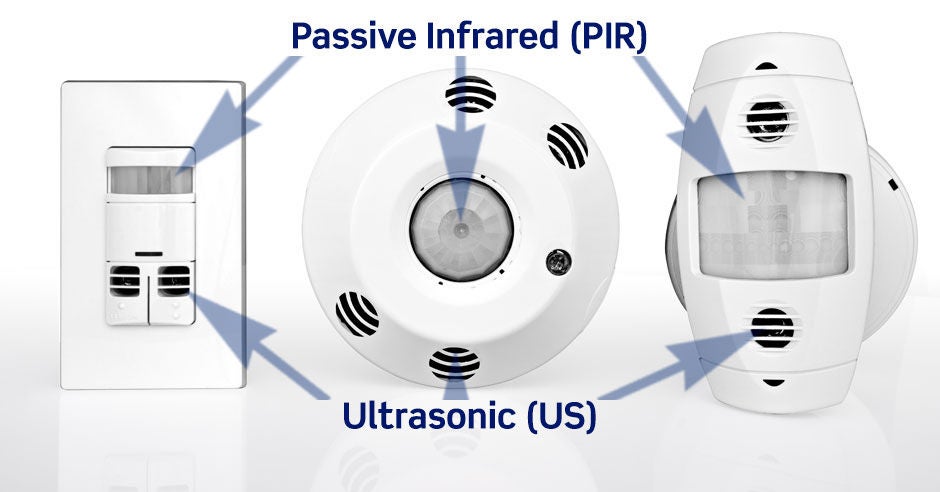
- High frequency waves used to detect Doppler shifts from motion in a space
- Can be mounted in most building materials and work like a radar gun to sense speed and size of motion
- Designed for installation in a variety of settings and behind objects made of plastic, glass or open office cubicle spaces
- Unable to penetrate metal and false alarms can be triggered by objects blowing in the wind
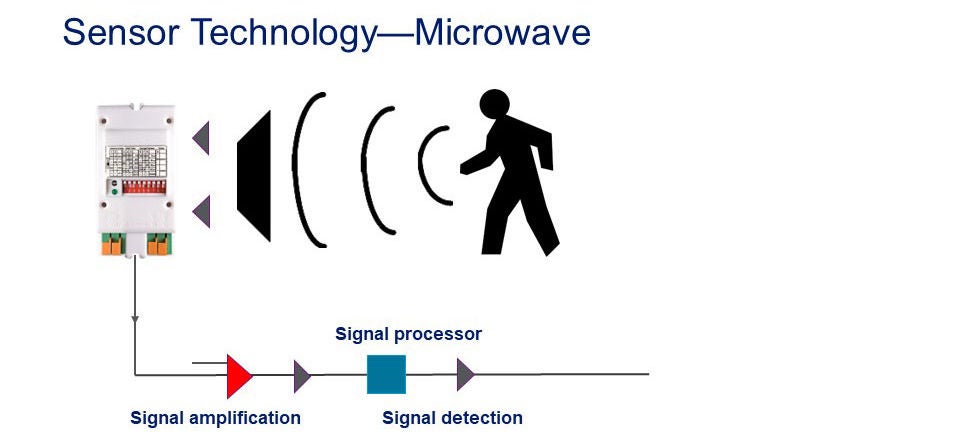
- Audio technology using a microphone inside of an occupancy sensor to hear sounds indicating occupancy
- Designed to be used in conjunction with PIR sensing within a space
- Cannot be used as a standalone sensor in spaces with no line-of-sight to motion
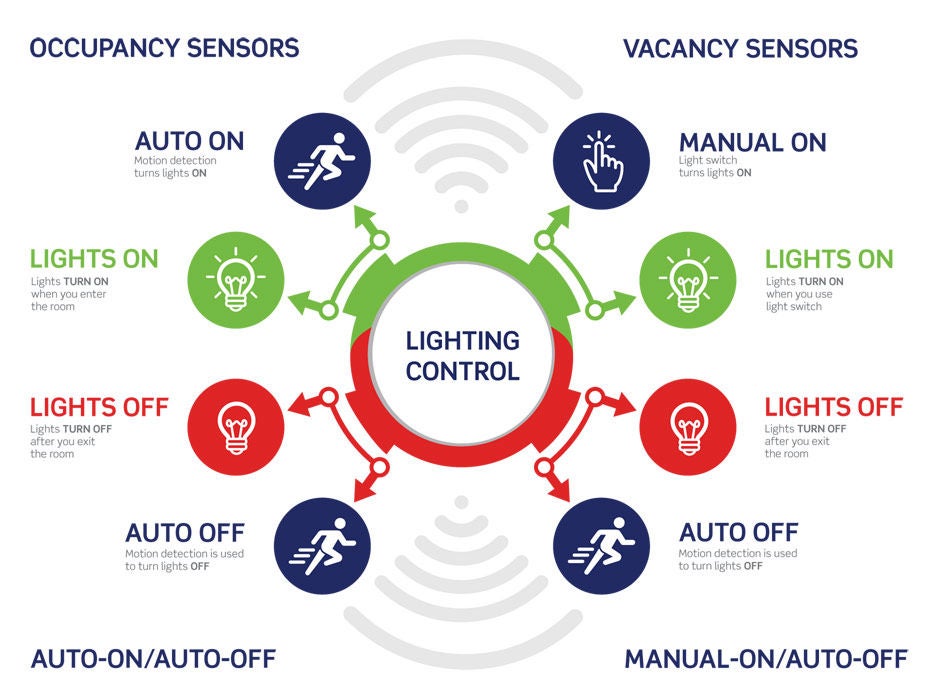
An occupancy sensor switch automatically turns the lights on when motion is detected within the sensor viewing range and automatically turns the lights off when the room is vacant, and motion is no longer detected.
A vacancy sensor switch, also known as a manual-on sensor, requires the user to manually turn on the lights and will automatically turn lights off when the room is vacant, and motion is no longer detected.















